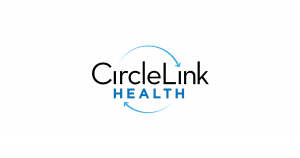
MedStack works with numerous digital healthcare innovators bringing new solutions to the way that care is researched, managed, delivered and maintained. These solutions are often built by individuals motivated by personal healthcare stories, looking to augment the way this very old but critical industry works to keep people healthy. In some cases, however, solutions are built by healthcare practitioners themselves, inspired by their own experiences working with patients and the systems intended to serve them. Via a unique opportunity, we present one healthcare provider’s personal perspective on the importance of digital innovation in healthcare and the barriers it typically faces.
***
My name is Dr. Richard Sztramko. I’m a Geriatrician and Internal Medicine specialist with an interest in Behavioural Neurology in Ontario. In my spare time I moonlight as a wannabe healthcare innovator as a startup co-founder in the physician communication space. Our company is called Virtual Ward; we streamline healthcare delivery by allowing physicians to communicate information regarding patient handovers in an online and mobile environment, and improve workflow inefficiencies to improve key performance indicators (KPIs) for healthcare organizations.
Digital Tools in a Hospital Setting
I spend three-quarters of my working year in the hospital, and face frequent frustration because the software and technologies available to me are difficult to use and hard to look at due to the lack of attention to UI/UX design. More often than not, the software impairs my workflow instead of improves it, and I am reminded of their limitations day in and day out. The problem, as I see it, is that healthcare organizations, including hospitals, have not worked out a process to procure innovative, functional, and cost-effective solutions in a timely fashion; in many cases, it seems, they procure solutions that are boring, non-functional, and expensive. Why is that?
I truly believe that this stems from the fact that there is no safe way for healthcare administrators and IT personnel, digital health entrepreneurs, startup incubators, and academics to play together.
How Digital Innovation is Slowed
The human and financial resources needed to manage existing IT infrastructure in HCOs are already at maximum capacity. The reason for poor progress on the innovation front is not due to a lack of motivation on the part of the HCO, but finding the resources within their already strapped budgets to foster innovation. When it comes to identifying the organization’s strategic outlook and next steps, there is no room for mistakes. This is because there is no money or human resources to fix problems when HCOs deviate from their predictable course. It is not a small issue when personal health information goes missing or is leaked, or HCO software doesn’t work. Without the human and financial resources necessary to foster an environment that allows for some degree of change and managed unpredictability, innovation will never happen. In order to find these resources, HCOs will need to make other business processes more efficient, or outsource some business processes in a cost-effective manner.
Because they do not have the ability to facilitate innovation, HCOs tend to stick with larger, more established companies that have proven to be excellent at providing large databases with established risk profiles. Unfortunately, using many (if not most) of these software solutions can lead to increasing frustration, burden of documentation, clinician unrest, and decreased efficiency for health care providers. HCOs’ focus on large, risk averse expenditures have dramatically impaired their organizations’ capacities to innovate in an iterative and ongoing fashion because there are no financial resources left to invest after the initial large capital expenditure. Oftentimes, HCOs will then have to wait until the software they procured is falling apart and completely outdated before another large capital expenditure will take place. This cycle stifles innovation and causes suffering and stagnation in HCOs for the 10-15 years that take place between large upgrades. If risk cannot be managed, it will be very difficult to break this cycle and provide meaningful results.
The Current Technology Adoption Process
On top of resource allocation and risk management, there are still many other barriers to innovation. If a hospital wants to engage with a promising new company, how would they know the available options to find the right fit? With any procurement, an HCO must evaluate product workflows, software fit, security fit, privacy fit, interoperability capacity, and potential for scalability. If a hospital were to evaluate even 10 companies, and we assumed the typical rate of progress in a large bureaucracy, this would take forever. There are too many variables and the complexity increases with each additional company. Will there be enough room in the budget to allow this to happen? To anybody that has attended budgetary meetings or been part of austerity measures for already stretched budgets, the answer is clearly no!
In addition to the problems outlined from the HCO point of view, startups expend tremendous amounts of precious capital developing ideas, building software with healthcare providers and navigating the HCO’s various privacy and security hoops. As such, surviving the process and winning RFPs is a success available to a limited few, further reducing the choice and variety of innovations available.
In my mind, there are five ways where a platform solution such as the one offered by MedStack can create immense value for healthcare innovation in HCOs.
1. By providing an opportunity for HCOs to outsource a significant amount of privacy and security vetting of individual vendors to a third party.
By using MedStack, HCO’s can create a priori the security, privacy, and interoperability requirements for all applications that want to run within the HCO’s environment. Applications built on MedStack will include these features by virtue of being built on the MedStack architecture. This will eliminate countless hours of discussion between hospital IT and privacy teams, and entrepreneurs who wish to get up and running in the HCO environment.
2. By providing space for HCOs to focus on the KPIs and business cases that matter, and not be lost in the muck and mire of privacy and security adherence.
By taking care of the privacy and security vetting up front, HCOs can assess the most important business cases to address based on KPIs and priorities as dictated by the HCO’s philosophy and strategic mandate. Currently, confusion surrounding privacy and security requirements prevent HCOs and entrepreneurs from working together to move the healthcare system forward.
HCOs will still need privacy offices, and practices such as account provisioning and privacy audits will still need to occur; however, the process will be much more efficient.
3. By providing companies the ability to focus on their business case, technology, and validation, and not having their precious and limited human resources consumed by details that should be automated.
Tens of thousands of dollars can be saved with MedStack providing healthcare app developers with PHIPA and HIPAA compliance infrastructure and documents, giving them credibility when engaging with HCOs.
Digital health companies do not need to spend large portions of their budget on PHIPA and HIPAA compliance documents through privacy consultants. It is possible to outsource this to a company that automates these procedures for you.
4. By providing a strategy for HCOs to deal with interoperability issues for all of their vendors, instead of using significant IT resources coming up with custom solutions and individualized approaches for all vendors.
HL7 FHIR is becoming the next universally accepted data interoperability standard in healthcare IT. Hospitals must develop strategies to manage all of their vendors in an organized and coherent way. MedStack provides the experience with coding, hosting architecture, and human experience to manage vendors in an efficient and streamlined fashion. Why wouldn’t you, as a healthcare organization, want to outsource the things that you’re weakest at?
With MedStack, there is one point of interaction between the hospital and hosting companies, compared to over 350 interactions and customized solutions between the hospital and every individual vendor.
5. By decreasing the immense costs to hospitals from purchasing and maintaining their own servers, including IT human resources and secondary costs facing businesses that want to connect with the hospital environment.
I was recently quoted $25,000 to purchase a virtual machine inside a hospital data centre for a pilot with Virtual Ward, and $25,000-50,000 to have the appropriate architecture work done by HCO IT personnel. The hospital IT infrastructure representatives also said it would need to be upgraded every 2 years. This is an excessive amount of money for the services provided, particularly when considering that hosting services are provided for a much lower cost outside of the hospital, in a much more transparent fashion. The large up front expense makes getting in the hospital door to complete a small pilot impossible, and stifles innovation before it even starts. Why are HCOs focusing energy and money on hosting? This is clearly not their area of expertise.
With a product like MedStack, vendors will have easy access to a secure and PHIPA/HIPAA compliant cloud-based hosting platform. They will be able to get up and running in a safe, secure, and privacy-compliant environment that a priori meets the HCO’s requirements. If the hosting is outsourced and made more cost-effective, more resources could be spent upgrading the technology that healthcare professionals and patients use every day.
***
In summary, I have become a MedStack customer and advocate because I believe in the value that they are creating for entrepreneurs and hospitals. MedStack could personify the rules of engagement that HCOs and entrepreneurs have been waiting for. They have the opportunity to spark innovation by streamlining communication between entrepreneurs and hospitals, making obtaining security and privacy adherence a more cost-effective and less cumbersome process, and providing HCOs with the opportunity to create a coherent and centralized interoperability strategy.
Dr. Richard Sztramko practices both Geriatrics and General Internal Medicine in Ontario, Canada. He is a Masters in eHealth candidate at McMaster, has co-founded a startup (Virtual Ward) dealing with healthcare provider communication in hospitals, worked on design with telehealth companies (Medeo), and created an online education tool for patients with dementia and their caregivers (iGeriCare). He is passionate about leveraging technology to create value for patients, caregivers, healthcare workers, and investors.





